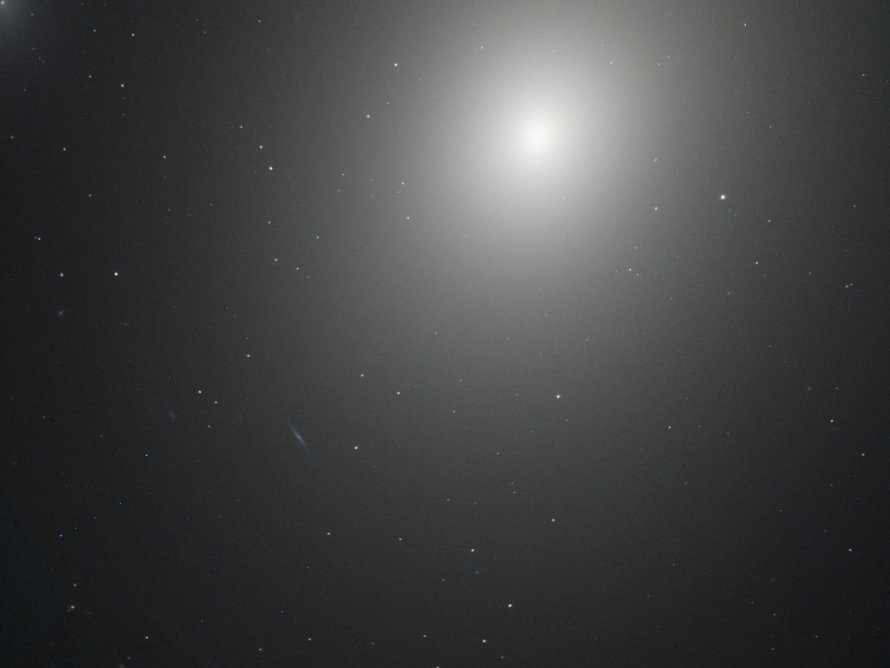M86 (NGC 4406)
Messier 86 (NGC 4406) is a lenticular galaxy located in the constellation Virgo in the Virgo Cluster of galaxies. M86 is 52000000 light years away from Earth.
M86 is best viewed during late spring, is magnitude 9.8, and can be viewed with small telescope. M86 is 9' x 6' in apparent size. For reference, the full moon is 30'.
Observing difficulty: Hard
- Name:
- Type:
- lenticular galaxy
- Constellation:
- Virgo
- NGC or IC:
- NGC 4406
- Magnitude:
- 9.8
- Viewing:
- small telescope
- Size:
- 9' x 6'
- Distance (light years):
- 52000000 LY
- RA:
- 12h 26.3m
- Dec:
- 12 57'
- Season:
- late spring
- Galaxy group:
- Virgo Cluster
- Messier Marathon #:
- 54
* The naked eye can see up to magnitude ~7-8 objects under ideal dark sky conditions.
An In-Depth Exploration of the Intermediate Lenticular Galaxy
Messier 86 (M86) is an intermediate lenticular galaxy located in the constellation Virgo, part of the expansive Virgo Cluster. This galaxy exhibits interesting physical properties and dynamic behavior, offering rich subject matter for astronomical study and observation.
Features of Messier 86
M86 is classified as an intermediate lenticular galaxy, signifying characteristics shared by both elliptical and spiral galaxies. It has a flattened, disk-like structure akin to spiral galaxies but lacks the prominent dust lanes and spiral arms. The galaxy is known for its high-velocity movement, so much so that it's moving through the Virgo Cluster so rapidly that it's in the process of undergoing ram-pressure stripping, where interstellar medium is being stripped away from the galaxy due to its motion through space.
The interaction of M86 with its neighboring galaxies also leads to a rich field of study. Notably, M86 is believed to be interacting gravitationally with another nearby lenticular galaxy, NGC 4438. This interaction has led to tidal tails and other distortions observable in the galaxies.
Magnitude and Size
M86 has an apparent magnitude of about 8.9, making it one of the brighter galaxies in the Virgo Cluster. While not visible to the naked eye, it can be spotted using a pair of binoculars or a small telescope under clear, dark sky conditions. The galaxy exhibits an apparent size of 8.9 x 5.8 arcminutes, which equates to a spatial diameter of approximately 135,000 light-years given its estimated distance of about 52 million light-years from Earth.
Finding and Observing M86
Finding M86 can be achieved by first locating the constellation Virgo in the night sky. The galaxy resides near the heart of the Virgo Cluster, and this cluster is found between the stars Denebola (in Leo) and Vindemiatrix (in Virgo). A simple way to locate M86 is to identify the "bowl" of the Big Dipper. Draw a line from Phecda to Dubhe and extend it until you reach the bright star Denebola in Leo. From there, move eastwards to Vindemiatrix. M86 is in the region between these two stars.
In a small telescope, M86 appears as a faint patch of light with a brighter core. Large telescopes under dark skies can reveal more detail, including a hint of the galaxy's elongated shape and its central concentration. Observing M86 can be a rewarding experience for amateur astronomers due to its brightness and its location within the richly populated Virgo Cluster.
M86 presents an intriguing subject for both scientific study and recreational observation. From its high-velocity movement through the Virgo Cluster to its interaction with neighboring galaxies, M86 offers an opportunity to witness the dynamic nature of galaxies in our universe.



